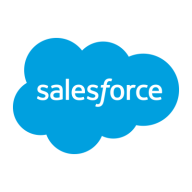


Find out what your peers are saying about Microsoft, Salesforce, Amazon Web Services (AWS) and others in BI (Business Intelligence) Tools.
Due to the data presented to stakeholders, they are able to make informed decisions that impact the day-to-day operations of the client, giving them more insights into what's happening within their organization.
I have seen a return on investment in that we can manage the Sisense environment with a very small number of users.
This saves a significant amount of time, particularly for reports that would have needed around fifty people.
The ROI of using Tableau extends to its seamless integration across various platforms, as it's from Salesforce and thus not limited to any specific cloud provider.
Tableau is saving me time, money, and resources, which I would rate as ten.
I rate technical support from IBM as eight out of ten, indicating a high quality of service.
The support was very good.
We typically get responses within 24 hours.
They provide quick email and phone responses and have Thai-speaking personnel.
There should be consistent standards for all users.
The technical support for Tableau is quite good.
It can be scaled out to other teams, but requires building cubes and implementing policies.
It is scalable to a very large extent and we can integrate any third-party tools.
Sisense works really well for simple to medium use cases and scales well.
Tableau is easy to use across various dimensions, whether on-premises or on the cloud.
The solution is fully scalable and performs well even with large datasets, provided there is proper supporting hardware.
Tableau is easy to scale.
I rate the stability of this solution as nine out of ten, indicating it is highly stable.
The application hangs after continuous use due to the buildup of cache.
I rate the stability a five or six because Tableau updates very often with new versions or patches.
There is room for improvement in self-service analytics and predictiveness.
I would like to see an improvement in the live data connection, specifically making the process faster.
It could provide more connectors to integrate with emerging different data sources to exponentially increase the amount of data it can handle.
I give Sisense a nine because the integration with some third-party tools is good.
We cannot send the entire Excel file reports via email within Tableau.
The product owner should enhance its benefits or clarify its role.
It sometimes requires extensive investigation to determine why the data does not appear correctly.
I rate pricing as a four, meaning it is more expensive compared to other solutions.
There was no significant difference in pricing between Sisense and ThoughtSpot.
My experience with pricing, setup cost, and licensing shows that pricing is a little bit higher when compared to other applications, but that justifies the use case.
Power BI as a much cheaper alternative.
A license for 150 users costs around $17,000 USD per year.
Looker is known to be quite expensive.
IBM Cognos is a robust governed platform with significant security features and provides excellent graphics and reporting.
It offers two ways to access data: by cubing the data or hitting it live.
It allows the user to cater to different use cases and is a very fast aggregator across different data sources, giving you the historical context and helping in operationalizing your data.
Sisense has positively impacted my organization by drastically reducing the time taken to build the data cube, and we can see real-time analytics.
A significant feature for me is the real-time connection to data sources because it effectively manages large data sets.
Tableau serves as a stable dashboarding tool for higher management, aiding in quick decision-making.
Building hyper extracts and visualization capabilities make Tableau a robust tool for data analysis.
| Product | Market Share (%) |
|---|---|
| Tableau Enterprise | 10.3% |
| IBM Cognos | 2.2% |
| Sisense | 1.1% |
| Other | 86.4% |



| Company Size | Count |
|---|---|
| Small Business | 33 |
| Midsize Enterprise | 23 |
| Large Enterprise | 83 |
| Company Size | Count |
|---|---|
| Small Business | 28 |
| Midsize Enterprise | 7 |
| Large Enterprise | 11 |
| Company Size | Count |
|---|---|
| Small Business | 117 |
| Midsize Enterprise | 66 |
| Large Enterprise | 183 |
IBM Cognos Business Intelligence provides a wide range of tools to help you analyze your organization's data. IBM Cognos BI allows businesses to monitor events and metrics, create and view business reports, and analyze data to help them make effective business decisions.
IBM Cognos applies techniques to describe, summarize, and compare data, and draw conclusions. This allows users to see trends and discover anomalies or variances that may not be evident by simply reading data. Data sources that contain information from different areas of a business can be stored in separate packages. Users can see only information that they have been granted access to, based on their group or role.
IBM Cognos BI consolidates the following business intelligence functions into a single web-based solution:
Reviews from Real Users
IBM Cognos stands out among its competitors for a number of reasons. Two major ones are its powerful analysis tool and its reporting capabilities.
Prasad B., a senior software engineer at a financial services firm, notes, “The product is a very good reporting tool and is very flexible. It allows for the users to get a scheduled report. We can receive automated reports as well. They are easy to schedule on a weekly or monthly basis. It is very fast. I mean in means of report output, it's very fast compared to the actual clients involved.”
Sisense is an end-to-end business analytics software that enables users to easily prepare and analyze large, complex datasets. Sisense’s Single-Stack BI software includes data preparation, data management, analysis, visualization and reporting capabilities.
Tableau Enterprise offers powerful features for creating interactive visualizations, dashboards, and maps, including drag-and-drop functionality and easy integration with multiple data sources, promoting real-time collaboration and self-service analysis.
Tableau Enterprise stands out with its ability to create user-friendly, interactive visualizations, making it pivotal for business intelligence applications. Users benefit from its seamless connectivity and advanced analytical functions, facilitating data blending and storytelling. Despite a complex learning curve and high licensing costs, its features like geospatial analysis and efficient content distribution drive its indispensable value for data-driven insights. Enhancements in predictive analytics and support integration with machine learning tools further its capabilities across industries.
What are the most valuable features?Tableau Enterprise is widely used for business intelligence, supporting industries like healthcare, telecommunications, and finance. Organizations utilize it to analyze performance indicators, operational insights, and financial analytics, enhancing decision-making through interactive reports and real-time data integration.